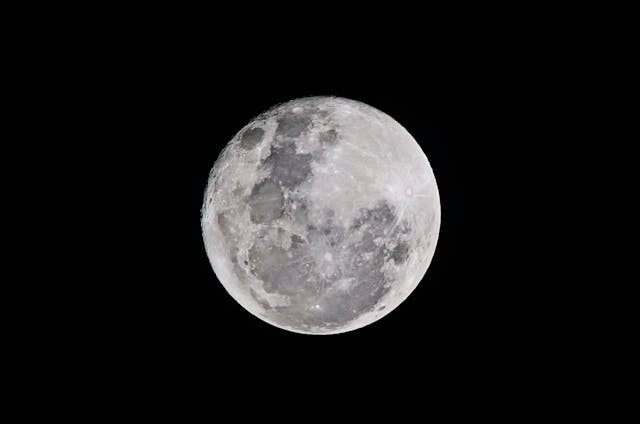
(Photo: Pexels/ Bruno Scramgnon)
There are elements on the moon that have researchers scratching their heads. However, it somehow made sense when they learned that the moon flipped itself inside out billions of years ago.
Lunar Evolution: Moon Flipped Itself Inside Out
The moon flipped over 4.2 billion years ago, leaving behind the lunar surface known to us today.
"Our moon turned itself inside out," research co-author and LPL associate professor Jeff Andrews-Hanna said. "But there has been little physical evidence to shed light on the exact sequence of events during this critical phase of lunar history, and there is a lot of disagreement in the details of what went down - literally."
Returned basaltic lava rocks from the moon have revealed unexpectedly high titanium contents. Furthermore, the moon's nearside is home to most of the titanium-rich volcanic rocks, according to satellite data. Scientists are perplexed about how these specific rocks got there and why they aren't more broadly distributed.
According to research from the University of Arizona, the moon first developed quickly and was completely engulfed in a boiling magma ocean. As this ocean cooled and hardened, the moon's outer layers, including its crust and mantle, were produced. However, the young moon would have continued to be turbulent in the lower strata.
According to models of moon creation, the final remnants of this massive lunar water may have solidified into thick minerals like ilmenite, which is abundant in iron and titanium.
Co-author and scientist Nan Zhang of Peking University earlier created simulations that proposed a massive impact on the moon, which would have caused a thick layer of material rich in titanium under the crust to move to the moon's nearside. Once there, the material would have sank, created sheet-like slabs, and cascaded to the moon's interior, leaving behind intersecting masses of thick deposits rich in titanium beneath the crust's surface.
According to Andrews-Hanna, when they saw a model, it was like a lightbulb went on. The subtle changes in the moon's gravity field show the same pattern, which indicates a network of dense material hiding beneath the crust.
The Oceanus Procellarum region and the side of the moon closest to Earth would have been darkened by the overturning of the lunar mantle billions of years ago. Compared to the thicker crust of the moon's far side, this area is lower in height and has a thinner crust primarily covered in lava flows. Additionally, the concentration of rare elements like thorium and titanium is higher.
"The moon is fundamentally lopsided in every respect," Andrews-Hanna added. "For the first time, we have physical evidence showing us what was happening in the moon's interior during this critical stage of its evolution, and that's exciting.
Moon Mission Delayed
NASA's planned crewed moon mission had been postponed. One astronaut said the pushback was the right move.
According to Canadian Space Agency (CSA) astronaut Jeremy Hansen, he and the other three astronauts from NASA favored delaying the agency's planned round-the-moon flight by a minimum of nine months until September 2025.
NASA offered multiple explanations for postponing the first moon landing mission; Artemis 2 was pushed back to 2025, and Artemis 3 to 2026. Among the reasons were the glitches in the abort system, which protects occupants if the Space Launch System rocket fails during a lunar landing, and problems with the heat shield of the Orion spacecraft, which is intended to protect them during re-entry.
RELATED ARTICLE: Metallic Flying Saucer That Comes Out From Cloud 'Definitive Proof' We Are Not Alone, UAP Hunter Claims
Check out more news and information on Space in Science Times.














